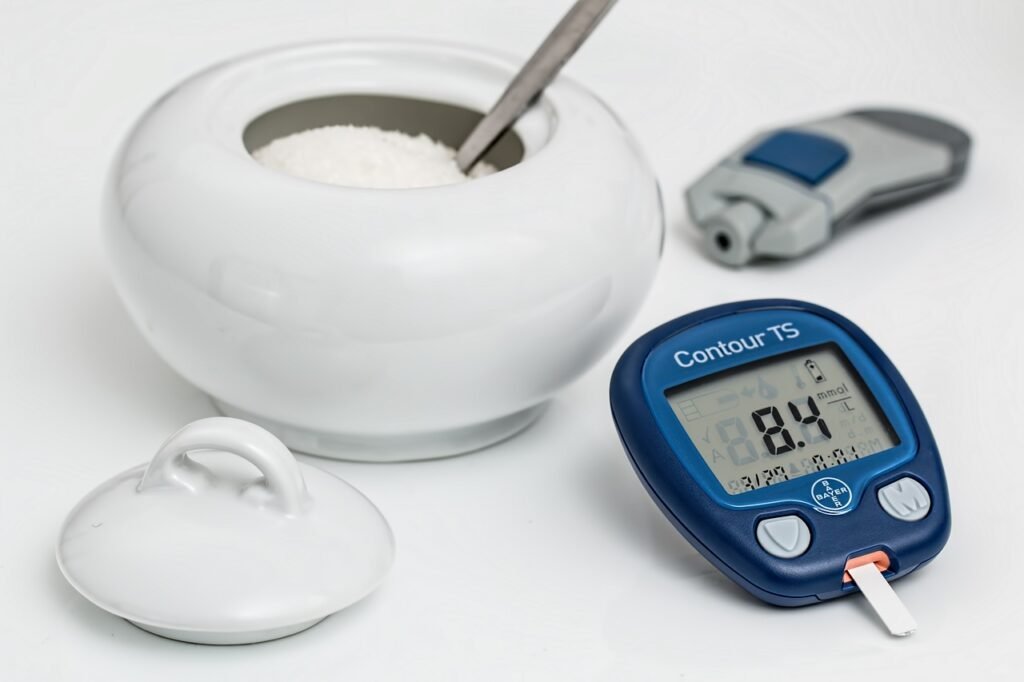Title: Unraveling the Nexus: The Relationship Between Obesity and Diabetes
Meta Description: Explore the intricate link between obesity and diabetes in this comprehensive guide. Understand diabetes symptoms, distinguish between type 1 and type 2 diabetes, and discover the impact of continuous glucose monitoring, diabetic diets, and blood sugar monitors. Empower yourself with knowledge to navigate and manage the complex relationship between obesity and diabetes.
Table of Contents:
- Introduction
- Diabetes Symptoms: Early Indicators
- Differentiating Between Type 1 and Type 2 Diabetes
- The Link Between Obesity and Type 2 Diabetes
- How Obesity Impacts Insulin Resistance
- Continuous Glucose Monitoring: A Technological Intervention
- The Role of a Diabetic Diet in Managing Obesity and Diabetes
- The Importance of Regular Exercise
- Blood Sugar Monitoring for Effective Diabetes Management
- Frequently Asked Questions
- Conclusion
Unraveling the Nexus: The Relationship Between Obesity and Diabetes

Obesity and diabetes share a complex interplay, impacting millions globally. This comprehensive guide unravels the intricate relationship between the two, exploring diabetes symptoms, types, and the significant role continuous glucose monitoring, diabetic diets, and blood sugar monitors play in understanding and managing this connection.
Diabetes Symptoms: Early Indicators
- Increased Thirst: Excessive thirst is often an early sign of diabetes.
- Frequent Urination: Diabetes frequently presents with increased urination.
- Unexplained Weight Loss: Sudden weight loss without an apparent cause may indicate the need for diabetes screening.
- Fatigue: Persistent fatigue can be a symptom, emphasizing the importance of recognizing these early indicators.
Identifying these symptoms early is crucial for proactive diabetes management.
Differentiating Between Type 1 and Type 2 Diabetes
- Type 1 Diabetes:
- Autoimmune condition.
- Onset typically in childhood.
- Requires insulin injections for survival.
- Type 2 Diabetes:
- Associated with lifestyle factors.
- Commonly diagnosed in adulthood.
- May involve lifestyle modifications, oral medications, and insulin therapy in some cases.
Understanding the distinctions between type 1 and type 2 diabetes is essential in unraveling their connection to obesity.
The Link Between Obesity and Type 2 Diabetes
- Insulin Resistance: Obesity is a significant risk factor for insulin resistance.
- Increased Fat Tissue: Excess fat, especially abdominal fat, is linked to insulin resistance and type 2 diabetes.
- Inflammatory Response: Obesity triggers chronic inflammation, contributing to insulin resistance and diabetes development.
The relationship between obesity and type 2 diabetes is evident in the shared pathways of insulin resistance and inflammation.
How Obesity Impacts Insulin Resistance
- Fat Cells and Hormones: Fat cells release hormones that interfere with insulin’s ability to regulate blood sugar.
- Inflammatory Factors: The inflammatory substances released by fat cells further disrupt insulin function.
- Cellular Dysfunction: Over time, the cells become resistant to insulin, leading to elevated blood sugar levels.
Understanding how obesity impacts insulin resistance provides insights into the relationship between obesity and diabetes.
Continuous Glucose Monitoring: A Technological Intervention
- Real-time Data: Continuous Glucose Monitoring (CGM) provides real-time information on blood sugar levels.
- Proactive Management: CGM allows individuals to make immediate adjustments to their lifestyle based on current glucose levels.
- Prevention of Complications: By incorporating CGM, individuals can proactively manage their diabetes, reducing the risk of complications.
Integrating continuous glucose monitoring into diabetes management is a crucial step in navigating the link between obesity and diabetes.
The Role of a Diabetic Diet in Managing Obesity and Diabetes
- Balanced Nutrition: Prioritize whole grains, lean proteins, fruits, and vegetables.
- Carbohydrate Management: Monitor and manage carbohydrate intake for stable blood sugar levels.
- Weight Management: A diabetic-friendly diet contributes to weight management, crucial in addressing obesity and diabetes.
A diabetic diet plays a pivotal role in managing both obesity and diabetes.
The Importance of Regular Exercise
- Aerobic Exercises: Engage in activities like walking, jogging, or swimming for cardiovascular health.
- Strength Training: Building muscle mass contributes to improved insulin sensitivity.
- Consistency in Activity: Regular, consistent exercise is more beneficial than sporadic intense workouts.
Incorporating regular exercise into one’s routine is crucial in managing obesity and reducing the risk of diabetes.
Blood Sugar Monitoring for Effective Diabetes Management
- Regular Checks: Periodic blood sugar monitoring provides insights into overall health.
- Understanding Trends: Monitoring trends in blood sugar levels helps in proactive health management.
- Consultation with Healthcare Professionals: Seek guidance on personalized blood sugar monitoring for effective diabetes management.
Regular blood sugar monitoring is an essential tool for proactive management and understanding the link between obesity and diabetes.
Frequently Asked Questions Relationship Between Obesity And Diabetes
Q1: Can diabetes be reversed with weight loss? A1: While weight loss can improve insulin sensitivity, diabetes management typically involves a holistic approach that includes diet, exercise, and medication.
Q2: Is obesity the sole cause of type 2 diabetes? A2: While obesity is a significant risk factor, genetics and other factors also contribute to the development of type 2 diabetes.
Q3: How often should continuous glucose monitoring be done? A3: The frequency of continuous glucose monitoring varies, but it typically involves regular checks throughout the day, especially after meals.
Conclusion
In conclusion, understanding the relationship between obesity and diabetes is crucial for proactive health management. From recognizing diabetes symptoms to differentiating between type 1 and type 2 diabetes, incorporating continuous glucose monitoring, adopting a diabetic-friendly diet, embracing regular exercise, and prioritizing blood sugar monitoring, individuals can navigate and manage the complex link between obesity and diabetes. This comprehensive guide serves as a roadmap for those seeking to empower themselves with knowledge and take proactive steps toward a healthier, balanced lifestyle.



